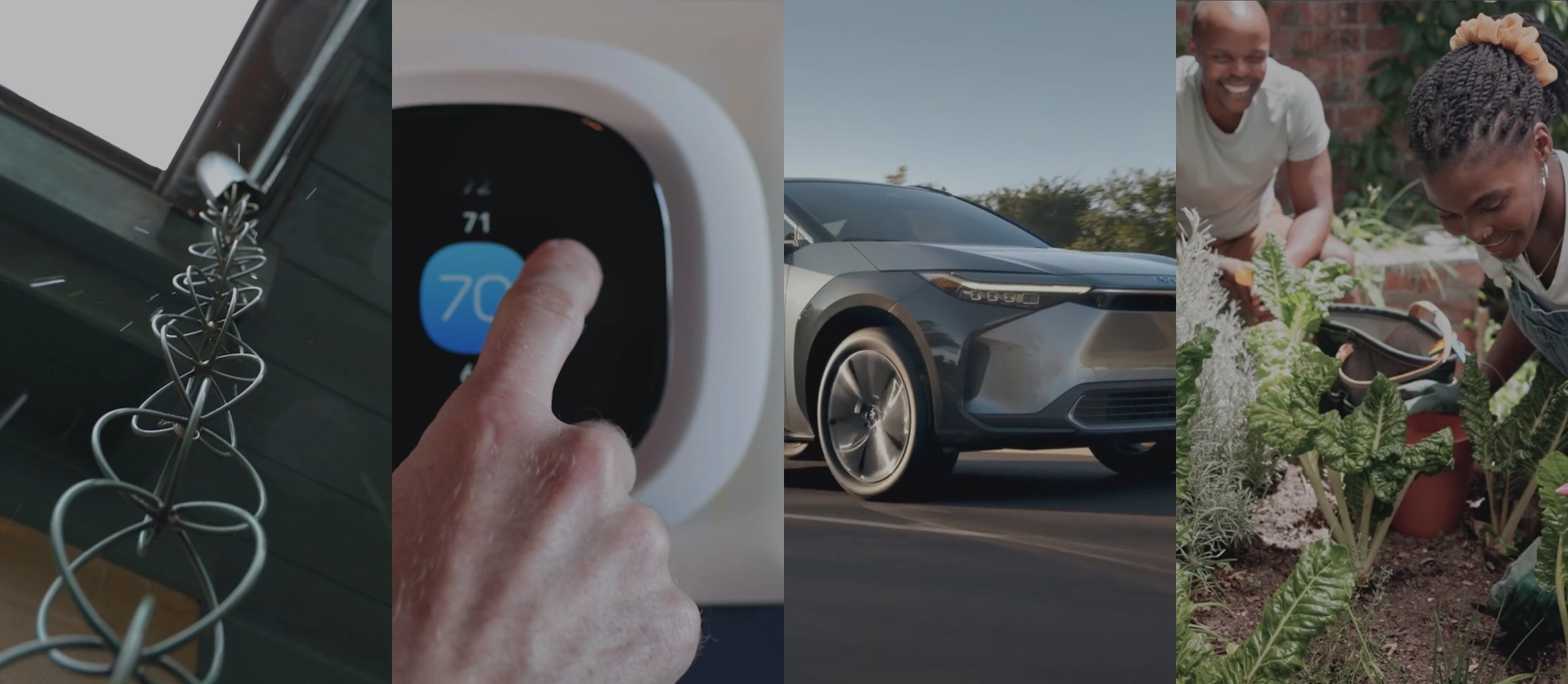
Transportation accounts for a large portion (28%) of total U.S. GHG emissions[1]. Over half of those emissions come from passenger cars, trucks, SUV’s and minivans. Here’re some ways to reduce your carbon footprint on the go:
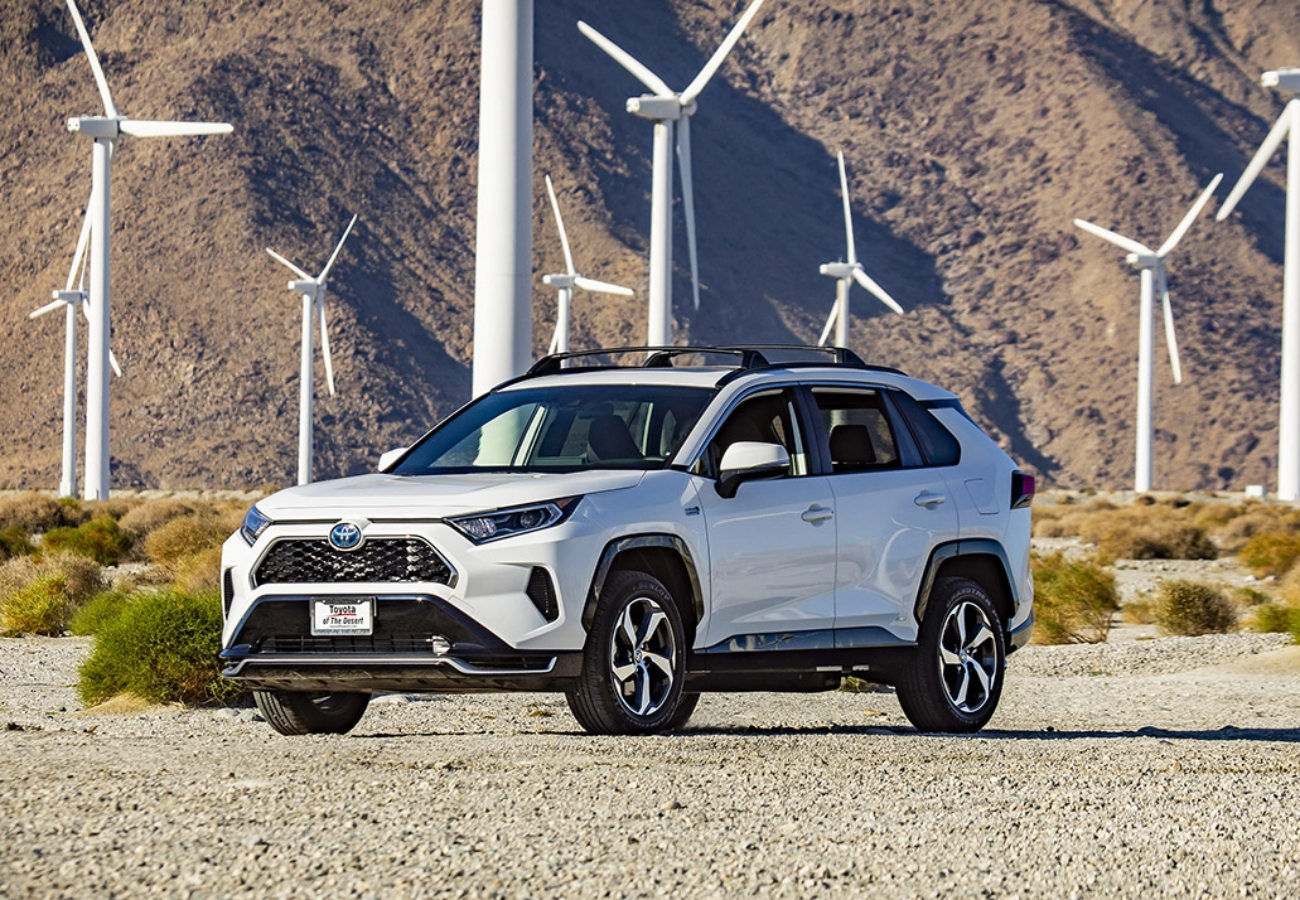
SMALL MAINTENANCE = BIG IMPACT: Keep tires properly inflated and remove accessories like roof racks and clamshell containers. Also, remember to change that air filter!
DRIVE A FUEL-EFFICIENT VEHICLE: Looking for new wheels? Hybrids and other electrified vehicles save fuel and can have way lower emissions than traditional internal combustion engine vehicles.
COMBINE ERRANDS INTO ONE TRIP: Several short trips can use more fuel than a longer, multipurpose trip, because you use less fuel when your engine is already warmed up.
Households account for an estimated 80% of the total energy consumption in the U.S.[2] Here are some simple yet impactful steps you can take to reduce your carbon footprint:

WEATHERIZE YOUR SPACE: Seal drafts and check your insulation.
INVEST IN ENERGY-EFFICIENT APPLIANCES: When shopping for new appliances, look for the Energy Star label. Don’t forget to recycle your old machines responsibly.
ADJUST YOUR THERMOSTAT: Lowering it by 3°F in the winter and raising it by 3°F in the summer can cut 1,050 pounds of carbon emissions per year[3].
UPGRADE YOUR LIGHT BULBS: Make the switch to LED bulbs, which not only save energy but also money in the long run. You’ll be amazed at the positive impact on your wallet and the environment[4].
GET THE DISCONNECTION DISCOUNT: Many devices continue to use electricity even when turned off. The consumption they cause is called an “idle load” and accounts for the output of 50 large power plants in the country[5]. Use power strips and timers to efficiently manage energy consumption.
INVEST IN RENEWABLE ENERGY: Add solar panels to your roof and explore options to support renewable electricity through your utility provider.
Your food choices are another powerful area to reduce your carbon footprint. About one-third of all human-caused GHG emissions are linked to food[6]. Here are some tips to help reduce your foodie footprint:

WASTE NOT WANT NOT: Buy only what you need and use up what you buy. By reducing food waste, you’re saving money and lowering your carbon footprint by up to 660 pounds of CO2e per year.[7]
FOOD MAKES GREAT DIRT: Instead of tossing food scraps in the trash, use a compost bin. This small effort prevents the release of methane in landfills.
SHOP LOCAL AND ORGANIC: Choose local, seasonal foods to reduce food transportation miles and support your local economy. This can reduce up to 1.1 TONS of carbon per person annually. Eating organic can reduce our individual carbon footprint by almost 1 ton annually[8] and reduces pesticides polluting our waterways.

The average American lifestyle demands 2,000 gallons of water per day,[9] and 40% of groundwater aquifers in the U.S. are at all-time lows.[10] Small changes made by each one of us can make a huge impact in water conservation.
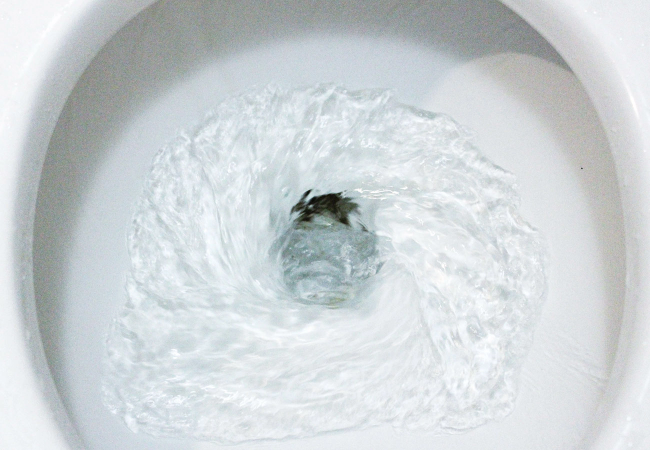
FIND THE WATER METER for your home (usually stashed outside in a box or hiding under a metal cover on the sidewalk). Check the numbers in that meter, then go on a two-hour water fast—don’t use any sinks or toilets. After two hours, if your numbers have changed, Houston, we have a leak!
LISTEN FOR RUNNING TOILETS AND LOOK FOR DRIPS.
TEST YOUR TOILET by dropping some food coloring in the tank (behind the seat). Wait a few minutes. If you spot color in the bowl, guess what? You’ve got a leak! Flush a few times to avoid dying your porcelain throne.

TURN OFF THE WATER WHILE SHAVING OR BRUSHING YOUR TEETH.
TAKE SHOWERS INSTEAD OF BATHS: Showers use less water than baths, and cutting your shower time by even a minute makes a difference.
INSTALL LOW-FLOW SHOWERHEADS: Not only do they save energy and money, but you can take them with you when you move.
LOAD IT UP (LAUNDRY): Wash only full loads of laundry and double check you’re using the correct load size on your machine!
LOAD IT UP (DISHES): Make sure the dishwasher is fully loaded when you run it.
SUPPORT WATER-RECYCLING CAR WASHES.
COVER POOLS TO REDUCE EVAPORATION when the pool is not being used.
WATER LAWNS IN THE MORNINGS OR EVENINGS to prevent evaporation. Pro tip: Make sure the water lands only on vegetation and not on streets or sidewalks.
HAVE A WATER-SMART LANDSCAPE: Design a landscape suitable to your climate, choose drought-resistant plants, and install water-smart irrigation.

Let’s break free from the plastic trap! Single-use plastics are flooding our planet, making up 50% of all plastic products.[11] Here are some simple ways to reduce plastic waste every day:
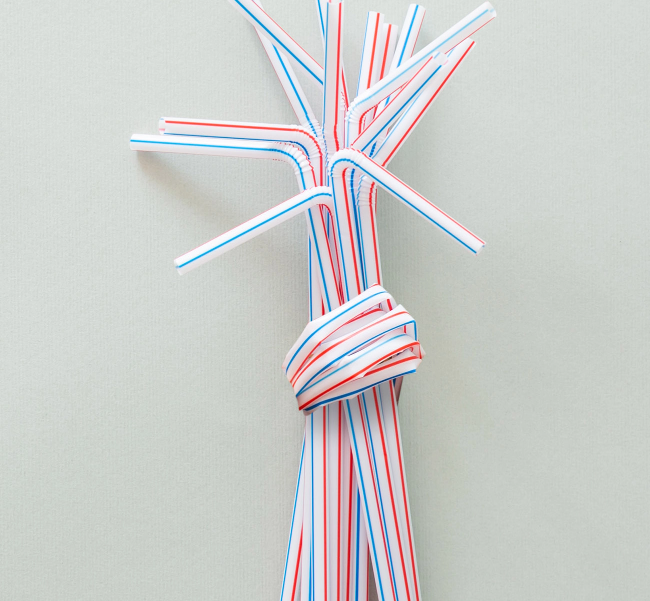
USE A REUSABLE WATER BOTTLE: Say no to disposable plastic bottles! Over a million are purchased every minute, and only a small fraction of them get recycled.[12] Carry a reusable water bottle with you instead.
BRING A TRAVEL MUG: Avoid those plastic-lined coffee cups! Carry your own travel mug to your favorite coffee shop.
MAKE IT THE FINAL STRAW: Plastic straws are a no-go! Many places now offer paper straws, or you can get a reusable one to carry with you.
PACK SMART AT WORK: Opt for reusable lunch containers and utensils. Doing this every day saves TONS of trash every year.
EMBRACE DRYER BALLS: Save energy and cut out fabric softener bottles by using wool dryer balls. They’ll leave your clothes soft and your conscience clear.
ELIMINATE PLASTIC IN HOUSEHOLD ITEMS: Consider using items like shampoo bars, reusable Ziploc bags and reusable bottles for cleaners.
GET RAGGEDY: Microfiber cloths are washable and just as good for cleaning than disposable dusters.
BECOME A TOTE BAG WARRIOR: Plastic bags are wasteful, flimsy, and have no style! Carry reusable bags. Pro tip: keep some in your car so you’ve always got them close by.
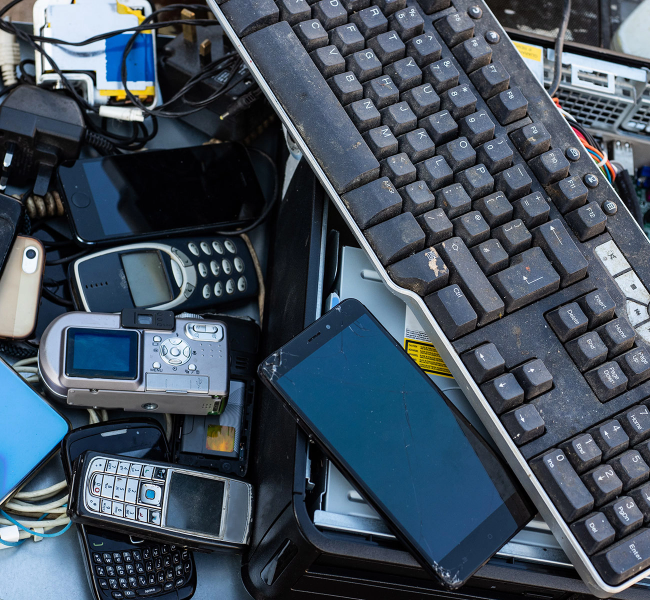
SMELL BETTER: Instead of buying aerosol air fresheners, simmer a pot of water with spices and herbs to fill your home with delightful scents.
DONATE, DON’T DUMP: Give gently used clothing and household items a second chance by donating them to thrift stores or local shelters.
RECYCLE OLD ELECTRONICS: Laptops, cell phones, TVs, and appliances contain valuable materials. For every million cell phones recycled, 35,000 pounds of copper, 772 pounds of silver, 75 pounds of gold and 33 pounds of palladium can be recovered.[13]
CHOOSE DIGITAL RECEIPTS: Opt for digital receipts. Traditional paper receipts often contain harmful chemicals and can’t be recycled.

Pollinators are vital to our food supply, with about 75% of crop plants requiring or benefiting from pollination. In fact, every third bite of food that we take is made possible by the efforts of pollinators.[14] Here’s how you can help them keep helping us:
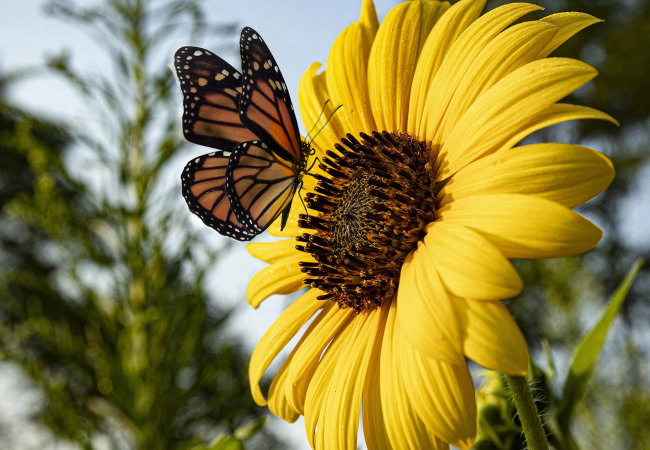
PLANT A POLLINATOR GARDEN: Plant native species only and create a plant cluster “target’ for pollinators to find. Plant different types of wildflowers that bloom from spring to fall, and select areas with protection from wind, at least partial sun, and water access. Remember to leave dead branches and logs as nesting sites as well as patches of bare ground for ground-nesting bees.
BUILD A BEE BATH: Bees get thirsty too! Fill a shallow bird bath or bowl with clean water and some pebbles and stones inside to break the water’s surface.
Trees filter air, provide fresh drinking water, help curb climate change and support thousands of species of plants and animals.
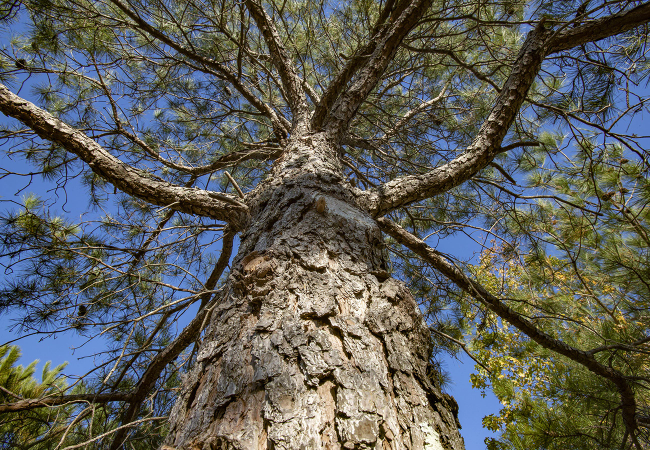
PLANT A TREE IN YOUR YARD OR DONATE: Plant a tree in your yard, or donate to a reforestation project. Every tree is a breath of fresh air, literally.
PAUSE PAPER: Using 100% recycled paper saves 24 trees per ton of paper.
Fishing removes over 77 billion kilograms (170 billion pounds) of wildlife from the sea each year.[15] Supporting sustainable fishing can prevent the collapse of a whole ecosystem.
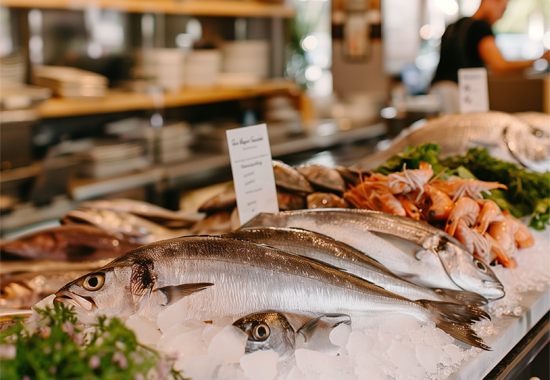
MAKE THE SMART CHOICE: Skip the endangered fish (like Bluefin Tuna or North Sea Cod) and opt for sustainable seafood. Look for the Marine Stewardship Council stamp of approval on all fish you purchase. It’s like a thumbs-up for responsible fishing and happy fish populations.
Next up, tread lightly on local turf and halt the invasion:

LEAVE NO TRACE AND STICK TO THE PATH: Take only memories, leave no trash, and stick to the trail. This helps protect the local wildlife, prevents erosion, and limits human-caused hazards to the local ecosystem.
STOP THE SPREAD OF INVASIVE SPECIES: Invasive species are non-native organisms whose introduction to a particular ecosystem can cause economic or environmental harm. They outcompete and dislodge native species that have evolved specifically to live there. Your actions can help stop the introduction and spread of invasive species.
ANTI-INVASION TACTICS: Check your plant purchases for invader potential, clean your boat thoroughly between bodies of water, give your boots a pre-hike scrub, and for the love of nature, don’t release aquarium escapees into the wild.
VOLUNTEER: Check with your local park, refuge or other wildlife area and help remove invasive troublemakers and spread the word.
BECOME A CITIZEN SCIENTIST: Anyone can contribute to citizen science! All you need is to spend time in nature, stay curious while you’re there, and share your observations with scientific data repositories like the Global Biodiversity Information Facility. Additionally, biodiversity citizen science projects investigate, for example, which species of plants or animals exist in an area and how many individuals of each species live in that area. Check out SciStarter and iNaturalist for more information.
Footnote copyright attribution
[1] https://www.epa.gov/greenvehicles/fast-facts-transportation-greenhouse-gas-emissions
[2] Direct and Indirect Carbon Emission from Household Consumption Based on LMDI and SDA Model: A Decomposition and Comparison Analysis, by Jingjing Chen, Yangyang Lin, Xiaojun Wang, Bingjing Mao and Lihong Peng, MDPI, 2022.
[3] https://www.nps.gov/pore/learn/nature/climatechange_action_home.htm
[4] https://www.nrdc.org/stories/how-you-can-stop-global-warming
[5] https://www.nrdc.org/stories/how-you-can-stop-global-warming
[6] What does food have to do with climate change?
[7] https://www.un.org/en/actnow/ten-actions
[8] https://www.un.org/en/actnow/food
[9] https://www.nationalgeographic.com/environment/article/top-ten
[10] America’s Aquifers are Shrinking. Our Survival is at Stake.
[11] UN Environment Program Our planet is choking on plastic
[12] UN Environment Program Our planet is choking on plastic
[13] U.S. Environmental Protection Agency, Electronics Donation and Recycling
[14] The Importance of Pollinators, U.S. Department of Agriculture
[15] https://education.nationalgeographic.org/resource/sustainable-fishing/
